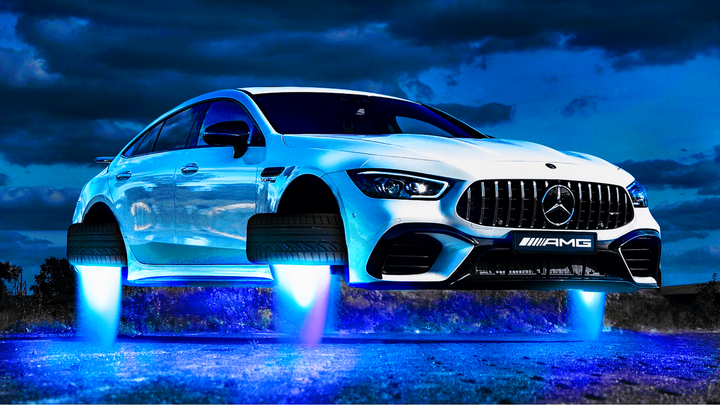Thanks to rapid development, today’s cars have advanced features, especially with the surge in electric vehicles. To explore the future of cars, experts in automotive electromechanical system design, AI, and sustainable energy have provided insights to envision what cars will look like in 10, 25, and 50 years.

How will AI revolutionize automotive technology in 10, 25 and 50 years? (Photo: Tomorrowsworldtoday)
2033: High-end amenities
In 10 years, cars are expected to look similar, but they will also be a little more luxurious. Advanced materials like carbon fiber and graphene can help increase durability and reduce weight, allowing for streamlined designs and improved aerodynamics.
In addition, OLED technology in headlights and taillights will become more popular, bringing better visual value and futuristic aesthetics to electric vehicles.
Automotive sensor technology will also advance, allowing vehicles to sense obstacles and adapt to diverse road conditions more efficiently. Advanced automotive cameras will be able to recognize objects more sensitively and accurately, making driving safer and addressing concerns such as night vision.
Augmented reality (AR) displays convey information without diverting the driver’s attention. The display technology could be developed to provide more interactive and immersive features, potentially combining data between vehicles to improve navigation and safety on the highway.
2048: Shapeshifting
In 25 years, cars could adopt modular designs that can change shape and respond well to different weather conditions. Solid-state battery technology could be widely used, making electric cars more affordable and environmentally friendly. Augmented reality could extend functionality beyond visual customization, including providing real-time information about the vehicle's exterior.
Solar integration could become commonplace, with lightweight, flexible optical panels seamlessly integrated into the roof and body of the vehicle. The use of self-cleaning and self-healing materials, such as polymers, could reduce maintenance efforts, ensuring the vehicle’s appearance stays fresh. Additionally, innovations in coating technology could make cars more efficient at cleaning themselves.
By 2048, augmented reality dashboards in cars could provide sophisticated data analytics, saving drivers a lot of energy, effort, time, and brainpower. Fully autonomous vehicles could become mainstream, using advanced sensor arrays and AI algorithms to minimize human intervention.
2073: Flying cars make a big revolution
In 50 years, cars could be completely transformed, incorporating VTOL technology for vertical takeoff and landing. Flying cars could become commonplace, impacting international travel and personal mobility. Transparent materials could redefine the aesthetics of flying cars, providing customizable looks, with the ability to become opaque at the driver’s discretion.
In short, the next 50 years promise to be a roller coaster of advancements in automotive technology. From familiar features and enhanced safety to revolutionary concepts like flying cars, the future of transportation is going to be an exciting ride.
HUYNH DUNG (Source: Interestingengineering)
Source


![[Photo] General Secretary To Lam chairs a working session with the Central Internal Affairs Commission](https://vphoto.vietnam.vn/thumb/1200x675/vietnam/resource/IMAGE/2025/5/22/3b7790f499da45b2803d8ae253207ef1)
![[Photo] Prime Minister Pham Minh Chinh chairs the Government's special meeting on law-making in May](https://vphoto.vietnam.vn/thumb/1200x675/vietnam/resource/IMAGE/2025/5/22/1c880aae96fd4e0894abc47a46fe19ba)









































































![[Podcast] Week introducing more than 500 OCOP products in Hanoi](https://vphoto.vietnam.vn/thumb/402x226/vietnam/resource/IMAGE/2025/5/22/d144aac2416744718388dbae3260e7fd)







Comment (0)